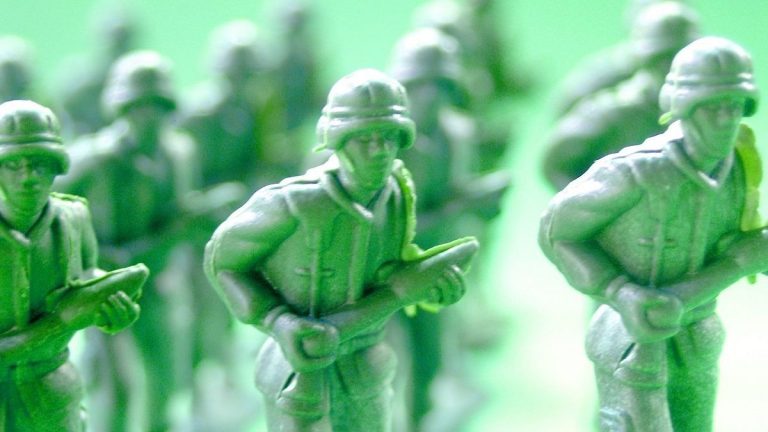
The immune system is responsible for defending the body against disease. This is its main task, although there is a growing interest in the importance of the immune system in other physiological aspects, such as the integrity, development, reproduction, and healing of tissues.
In this way, the presence or simple contact of a foreign agent in the body generates a reaction of the immune system. This is aimed at destroying the invader. This reaction is called the immune response, which in turn defines immunity.
Structure of the immune system
The immune system has a series of specific organs and cells involved in the defense function of the body.
Among the organs are the bone marrow, the thymus, the lymphoreticular tissue associated with the intestine (GALT, for its acronym in English, and Peyer’s patches), and the lymph nodes in general.
Cell types of the immune system
Among the cells that are part of the immune system, it is possible to differentiate between:
Cells related to the phagocytic non-specific immune response, carried out by polymorphonuclear neutrophils, monocytes, and macrophages.
Cells responsible for a specific or adaptive immune response: lymphocytes. Within these distinguish the T lymphocytes, the B lymphocytes, and null cells (non – T, non – B).
Stem cells or precursors of B and T lymphocytes are housed in the bone marrow. When the precursor cells leave the marrow and mature in the thymus, they become T cells. On the contrary, when they do so in the bone marrow itself, They are converted into B cells. In this way, they pass to the spleen, intestine, and lymph nodes.
All these cells constantly circulate through the bloodstream to monitor the presence of foreign agents and trigger the immune response, as soon as an intruder is detected.
The great complexity of the immune system requires a greater specialization of these cells, so that different types and subtypes are known.
Lymphocyte types
Within the T lymphocytes, the following can be differentiated:
T helper lymphocytes. They are distinguished by presenting the CD4 membrane marker and for this reason, are often referred to as CD4 + or T4 lymphocytes. The Th1, Th2, and Th0 subtypes are important.
Cytotoxic or suppressor T lymphocytes displaying the CD8 + membrane marker.
The B cells differentiate in the bone marrow and are mostly distributed in the blood and organs of the immune system. However, about 15% are in the peritoneal cavity. These present the membrane marker CD5.
Null cells (not B, not T) are known as killer cells (K cells) or natural killer cells (NK cells). They are mainly involved in the defense against tumors.
Modulating substances of the immune response
An infinity of molecules has been described whose levels modulate the type and intensity of the immune response.
It is possible to differentiate between cytokines and adhesion molecules, also called integrins or selectins.
Among the cytokines, we find interleukins, of which more than 11 types are known. Among them, you can find:
Interferon (with alpha, beta, and gamma variants).
Factor necrótico tumoral (TNF).
Cell growth factors.
Arachidonic acid metabolites (such as leukotrienes and prostaglandins).
Stages of the immune system response
Nonspecific immune response
The first response against a foreign antigen or agent is nonspecific. It is mediated by phagocytic cells and mediators of inflammation. It should be noted that if the inflammatory response is too high, the tissues can be damaged.
When a macrophage (a cell that can engulf) encounters an antigen, it attracts it and engulfs it. From the remains of the digested protein of the antigen, the T cells will alert the B cells to synthesize antibodies and will promote all the mechanisms available for the fight. The interleukin-1 secreted by the macrophage will also act as an activating element.
Interleukin-1 and its effects
A macrophage will secrete interleukin-1 upon detecting an infection. The effects of this cytokine on the entire body are varied, but they respond to the reaction that is necessary to deal with the infection:
The proliferation of B lymphocytes.
Increased secretion of antibodies.
Production of prostaglandins and collagen in synovial cells (joints).
Fever.
Changes in plasma metal levels.
Etc.
Interleukin-1 also has mitogenic activity, which is why it stimulates cell division. It also stimulates the immune reaction, favoring the proliferation of B and T cells.
Another of its effects is to promote the production of interleukin-2 by T cells, which in turn enhances the secretion of interferon. All this reinforces the defense mechanisms of the host.
Interferon in the immune response
Interferon is a substance that exerts a non-specific antiviral action, preventing the replication of viruses. It also has an immunoregulatory capacity through the activation of macrophages and the reduction of the immunosuppressive effect of a high concentration of macrophages. Power, also, the activity of killer T cells ( killers ). They are, in short, a generic signal of immunoactivity.
Specific immune response
The specific immune response can be mediated by cells (cellular immunity) or by antibodies (humoral immunity). Antibodies or immunoglobulins (Ig) are secreted by B lymphocytes and 5 types are distinguished:
IgG. It is the most abundant in human serum.
IgM. It appears exclusively in the intravascular space.
IgA. It is the predominant form in secretions where it appears in combination with another protein that protects it from proteolysis, this complex being called secretory IgA.
IgE. Little abundant in plasma but appears in the membrane of several immune cells and is important in the response against parasites. Immunoglobulin E is related to allergies.
IgD.
A particular case is that in which the antigens penetrate orally, first producing a local effect on the GALT. This can send signals for the activation of the immune system in general. If the antigens are soluble molecules, we speak of oral tolerance, a response basically of a humoral type, with an increase in producing cells and in the synthesis of immunoglobulins.






